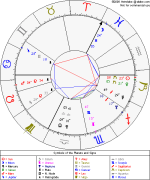That's not an easy question to answer, for several reasons - but I'll have a go.
Firstly, the tradition has three main (and several minor) components,
Hellenistic Astrology - covering a period from the fourth century BCE till about the fifth century CE but at it's height around the first and second centuries CE.
Medieval, comprising Arab (more accurately Persian) Astrology, from around the 8th century CE till the 11th Century and European from around th 11th to the 15th centuries
Seventeenth Century Astrology, mostly focussing on Lilly and Morin but including Henry Coley and John Partridge. There's also a case for including John Dee from the 16th Century.
These are separate methods though there is clear overlap, so the first issue is which do you want to use. The answer may well depend on two things, ease of access and resources available.
So secondly we have ease of access. Lilly wrote in English - though bear in mind Seventeenth Century English had the same words but sometimes with different meanings, and a lot of words that have dropped out of modern usage. So terms that were very familiar to his readers, are now obscure. Hence a Lilly with modern footnotes is almost essential (see resources below)
Morin and the medieval Europeans wrote in Latin, so you're dependent on translations available, the same goes for the Arabs who wrote in Arabic or Farsi (Persian) and of course the Greeks who wrote in Greek (ancient, not modern) - so we know of quite a few texts but as yet they've not gone through the translation mill. Even some works are only partially translated, Morin's Astrolgia Gallica is one, but quite a few of the medieval texts and especially the Hellenistic texts fall into this category of limited access. So Lilly becomes useful not because he is the best source for traditional Astrology (though he is a very good source) but because he is more accessible. His natal Astrology has been rubbished a bit, but actually I find it a lot more useful than some critics suggest. Unlike modern authors, there's no publishing house to edit and proof read the text, so there are contradictory statements, or repetitions, that are not quite the same.
Whichever of the three periods you go for, there is a large culture shock in store. Our modern understanding of signs is just that - modern. The sign meanings in common use today are the invention largely of Alan Leo about a century ago. In traditional texts you'll see no reference to people as 'Pisces' or 'Aries', etc as generic psycological types. Sign meanings are much more similar to Vedic practices.
To make matters worse many authors wrote either for their fellow practioners, or for their apprentices, and the book also required the master to be present. Quite often points that could be illustrated with a chart are not, so many things appear ambiguous. Again Lilly is an exception to this, as is Morin.
One final point on access - they used square charts, just like modern (and traditional) Vedic ones. Some translations or annotated texts try to insert modern wheel charts - the edition of Lilly's natal work does just that - but mainly as appendices.
So Lilly wins from the point of view of access and as a practicing Astrologer, you get a professional's judgement about some of the techniques he used or tried out - especially his view on other authors.
In terms of resources Lilly's Christian Astrology is available for natal work you need Books 1 and 4 but as book 1 is only published along with Book 2, it means you need both published works. I noticed that Book 3 is now available for Kindle at a low price, so if you are a Kindle user, it's well worth buying.
From modern 'Traditionalists' a great book for natal is Dorian Greenbaum's
Temperament - Astrology's Forgotten Key, At a more general level Avelar and Ribeiro's
On the Heavenly Spheres which I've reviewed elsewhere gives a very good starter and Ben Dykes
Traditional Astrology For Today gives a good background and starter text. Again I've reviewed that elsewhere.
Finally on resources there's the thread
http://www.tarotforum.net/showthread.php?t=135390
Which is a good start, as I do a natal analysis of Bill Clinton as an illustration.
Much of that might well seem daunting, but that's because it is not an easy step. If you are interested, I could take you through the first steps and use your chart as an illustration of how a natal reading would proceed, especially as other's might find it useful. That would give you a basis from which to explore as and when time and money for books is available. I'd mainly use Lilly but also perhaps some Medieval and Hellenistic comments for comparison.


